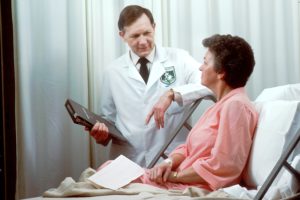
How is it that some medical sales professionals consistently outsell their competition? Why do some reps consistently earn over $1M/year while others struggle to make a modest living?
There is no doubt that factors like organization, goal setting, hard work and grit are contributors to success, however virtually everyone in the 20% of the distribution curve also share these virtues. What separates the elite 1% is their communication style?
To date, there is no more effective communication technique than SPIN selling.

SPIN puts structure behind this by asking questions in a particular sequence to progress the conversation to its natural conclusion, which is the close.
If you are not familiar with this concept, SPIN is an acronym for the 4 types of questions that you should be asking: Situation, Problem, Implication, and Need Payoff.
To understand the method, you need to understand the purpose of each type of question.
S – Situation
Since the time you get with physicians is often limited, the temptation is often to jump right in and regurgitate your sales pitch as quickly as possible. However, selling isn’t about your products and what you can offer them, it’s about your customers and what their needs are.
Situation questions help you gather information about the customer’s starting point so you can better understand their needs.
These would include questions like
- “How often do you treat patients with _?”
- “What is your current treatment protocol for those patients?”
- “What tools are you currently using to address patients with _?”
P – Problem
If your prospect doesn’t recognize that there is a problem, then there is no need to seek a solution. Problem questions help you get your customer to open up about potential problems they may have as they see it.

Example Problem questions
- “Do you feel that the current treatment methods are as good as they can be?”
- “What happens if your treatment protocol fails?”
- “How much staff time does it require to treat patients with _?”
I – Implication
Now that you have gotten your prospect to open up and identify their own pain points, implication questions can help drive a sense of urgency.
Solely identifying problems may not be enough motivation to seek change. Implication questions show your client why these problems need to be solved immediately.
Example Implication questions
- “What are the downstream affects for patients who don’t respond to the current treatment protocol?”
- “How does that impact your daily workflow”
- “How much more could your staff achieve if they were able to save X minutes per day?”
Implication questions are arguably the most important component of SPIN selling as it highlights your customer’s pain points and motivates them to do something to address it.
N – Need Payoff
If the first 3 sets of questions are done correctly, then Need Payoff questions should be the natural conclusion to your sales presentation.

Example Need Payoff questions
- “What benefits would your patients see by improving this metric?”
- “Would your staff find benefit in utilizing a more efficient system?”
- “If you had a tool like this available in your practice, where would you see yourself using it? How would it impact your practice?”
SPIN selling is not a simple trick. It requires active listening so you can be responsive to their unique needs.
However, like anything else, practice makes perfect. By consciously framing your conversations in a SPIN selling format, before you know it these habits will become second nature and you will find yourself performing like a top-level medical sales professional.



